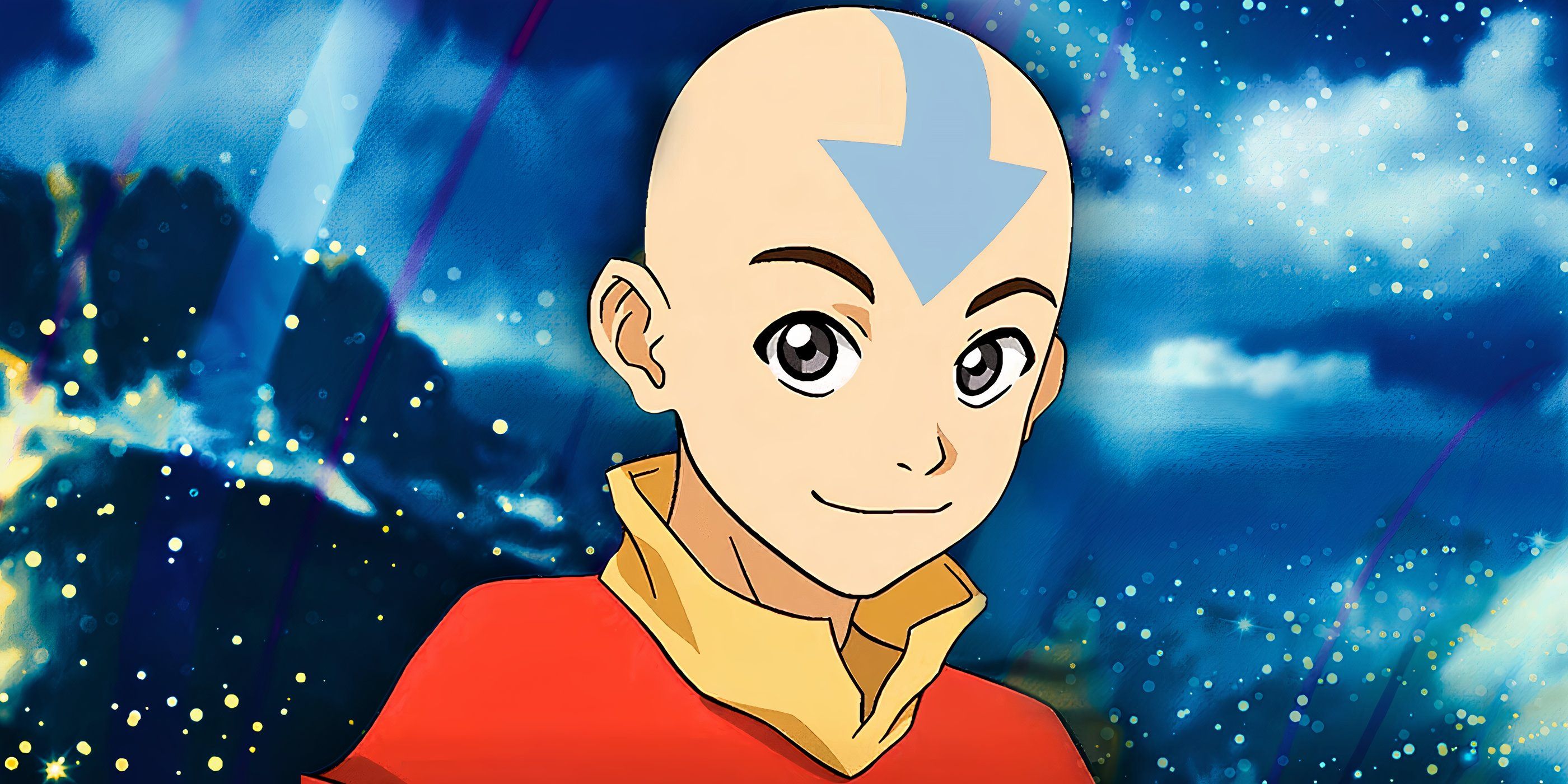Warning! Spoilers ahead for Avatar: The Last Airbender!Picking just a few of the most iconic episodes of Avatar: The Last Airbender feels a little impossible, as there are so many installments of the TV series that could be described as perfect. With very few filler episodes and a perfectly balanced show ending that was planned from the start, there’s a lot to recommend about Avatar. While the action-oriented installments are some of the most thrilling, this is only one part of the show that contributes to its longevity. Each episode of Avatar was crafted to stand the test of time.
Unlike the Avatar episodes that I always skip on a rewatch, these installments are impossible to miss. Even if their stories aren’t the most plot-heavy or don’t further the overarching story of the series, they do vital emotional work that fleshes out the show as a whole, making it feel real. The characters are a large part of what keeps audiences coming back to Avatar, as they’re flawed yet easy to empathize with. All of these episodes are deeply in conversation with what makes the characters real and how their development goes hand-in-hand with the series’ narrative arc.
8
The Firebending Masters
The Firebending Masters
Season 3, Episode 13
Aang and Zuko are foils of each other throughout Avatar, and this doesn’t change when Zuko joins Team Avatar and vows to stop his father from taking over the world. Though Aang has an open heart and wants to be forgiving, his past with Zuko doesn’t make this easy, and they still chafe against each other in season 3 until “The Firebending Masters.” In the episode, Zuko struggles to return to his full strength as a firebender, and Aang still fears the practice, so they set out and eventually find the last two dragons in the world.
Visually, “The Firebending Masters” has some of the best art of the series, and narratively, the episode’s story allows Zuko and Aang to take the next step in their character evolutions together. Avatar: The Last Airbender had a perfect finale, but its effectiveness is thanks to the work of the episodes that led up to it, like “The Firebending Masters.” The episode reminds the characters and audience that redemption, like Zuko’s, is possible, and the universe’s magic is still out there.
7
The Siege Of The North: Parts 1 & 2
The Siege Of The North: Parts 1 & 2
Season 1, Episodes 19 & 20
Avatar season 1 had the most difficult job of all the show’s installments, as it had to set up the story’s world, provide exposition, and make the audience care about the characters. While there are a few filler episodes throughout season 1, the show gains momentum as Aang and his friends zero in on the Northern Water Tribe and finally face the Fire Nation in their first true battle. “The Siege of the North” also put Zuko and Katara back into combat, but this time, they’re on a more level playing field.
The audience learns about the Avatar state and witnesses just how close Aang is to the spirit world through his interaction with Koh, the chilling face-stealing spirit, to his embodiment of the water spirit’s anger. These are show-defining moments and demonstrate the depth of the series’ lore. Though “The Siege of the North” ends on a more hopeful note, it acknowledges that the journey to defeat the Fire Lord will be accompanied by serious loss and sacrifice. This tonal balance is why Avatar is so beloved.
6
The Storm
The Storm
Season 1, Episode 12
While the Avatar season 1 finale is incredible and the most important episode of the season in terms of plot, “The Storm” was the episode that proved to viewers that Avatar was something special. “The Storm” concretely draws the parallels between Aang and Zuko for the audience to see as they relive the worst moments of their lives. Aang recalls the way he ran from the Southern Air Temple, resulting in his hundred-year slumber, and Zuko relives his fight with his father and subsequent banishment.
Aang and Zuko share a heavy weight of responsibility and expectations.
These are two painful memories that are key pieces of Aang and Zuko’s characters and influence their decisions and world views for the entire series. Aang and Zuko share a heavy weight of responsibility and expectations. “The Storm” showcases how fallible the pair are and why they feel the need to prove themselves. Though this manifests in different ways for both of them, even in season 1, Avatar was laying the groundwork for the relationship and partnership between the Avatar and the future Fire Lord.
|
Title |
Rotten Tomatoes Critic Score |
Rotten Tomatoes Audience Score |
|
Avatar: The Last Airbender (2005–2008) |
100% |
98% |
5
The Tales Of Ba Sing Se
The Tales Of Ba Sing Se
Season 2, Episode 15
Ba Sing Se is one of the most vividly imagined cities within the world of Avatar, showcasing the writers’ ability to craft realistic and lived-in settings. In “The Tales of Ba Sing Se,” the audience gets a brief break in the action, with no overarching plot developments. Instead, the episode is a series of vignettes, which is out of character for a typical installment of the series. However, this worked in favor of Avatar, as each character got to return to their roots and do some emotional growth.
The time spent with Uncle Iroh in “The Tales of Ba Sing Se” is the most memorable and moving piece of the episode. We feel his pain as he mourns his son, and this is a reminder of the fact that the Fire Nation’s war is one that has caused pain for everyone involved. However, it isn’t just Iroh who does some reflecting throughout “The Tales of Ba Sing Se,” as Appa’s absence weighs heavily on the characters, especially Aang, and Zuko is once again pushed to reckon with his role in the war.
4
The Avatar And The Fire Lord
The Avatar And The Fire Lord
Season 3, Episode 6
There are plenty of flashback episodes of Avatar, as the series uses these installments to flesh out the context of the story and provide vital world-building. Aang’s inherent connection to his past lives and his closeness to the universe as the Avatar often come into play in these episodes. However, in “The Avatar and the Fire Lord,” Aang takes a back seat, witnessing the friendship between Avatar Roku and Fire Lord Sozin before the war broke out. Aang and Zuko learn about this history separately, but it mirrors their own upcoming friendship.

Related
Avatar: The Last Airbender’s Spiritual Successor Is This Netflix Show With 100% On RT, Not Legend Of Korra
This landmark animated TV show is the true follow-up to ATLA, even though Legend of Korra is the next series in the chronological Avatar timeline.
“The Avatar and the Fire Lord” humanizes both the great Avatar Roku, whom Aang looks up to, and the “evil” Fire Lord Sozin. Throughout the story, we learn that Sozin was once a young person with the potential to be a great leader, but fear and ambition ultimately put him on the wrong path. While Aang takes this as a sign to continue looking for the goodness inside of others, Zuko reflects on his own place in the world, setting up his defection from the Fire Nation and desire to right the wrongs of his father and grandfather.
3
Sozin’s Comet: Parts 1–4
Sozin’s Comet: Parts 1–4
Season 3, Episodes 18–21
Though “Sozin’s Comet” is a multi-part episode, the story is irrevocably interconnected and is best watched one after the other, giving the viewer a complete picture of Avatar‘s farewell episodes. Though the confrontation between Aang and the Fire Lord has been a long time coming, it still feels as if “Sozin’s Comet” passes in a flash as the pieces of the story are seamlessly tied together in preparation for the conflict. Though Aang’s interaction with the Lion Turtle is a little convenient, it leads to the full-circle moment of Aang learning to bend energy.
Everything Avatar has been grappling with since the beginning of the series comes to a head in “Sozin’s Comet.” Aang must interrogate his duty as the Avatar versus his deep-seated belief in non-violence, and the possibility that Aang will fail and Ozai will rise to power permanently feels vividly real. While the epic final battle between Aang and Ozai is unforgettable, it’s all the events that lead up to this moment throughout the four-part event that make it such a fitting end to Avatar.
2
The Crossroads Of Destiny
The Crossroads Of Destiny
Season 2, Episode 20
While there’s no bad season of Avatar, there’s a case to be made for season 2 being the strongest installment of the show, and the heartbreaking finale is a large part of why. After spending many episodes in Ba Sing Se attempting to break through the corruption and propaganda running rampant throughout the streets, Team Avatar, Zuko, Iroh, and Azula finally meet. It’s the moment audiences have been waiting for all season, and Avatar doesn’t disappoint in its ability to keep the viewer on their toes.
Not only is “The Crossroads of Destiny” a fantastic closer to the season, but it effectively sets up the central challenge that Aang will face throughout season 3.
Not only is “The Crossroads of Destiny” a fantastic closer to the season, but it effectively sets up the central challenge that Aang will face throughout season 3. When he’s injured by Azula and blocked from accessing the Avatar state, it’s a tough moment to watch, but it showcases the depth of emotion that Avatar so easily brings to the surface. Zuko’s betrayal and decision to turn on Katara, going back on his path of redemption, is painful, but it was a stroke of genius storytelling.
1
Zuko Alone
Zuko Alone
Season 2, Episode 7
Zuko is the most interesting character in Avatar. His long and difficult journey to redemption is the most complex story told throughout the series, as Zuko becomes a more nuanced and obviously flawed character than some of the leading heroes. “Zuko Alone” is a pivotal point for Avatar, as it provides insight not only into Zuko’s character but also into the larger effect the Fire Nation’s war is having on everyday people trying to live their lives. This opens Zuko’s eyes in ways he never expected.
The live-action Avatar: The Last Airbender season 2 must do justice to “Zuko Alone,” as it’s arguably the best episode of the entire series. While this episode isn’t the first time that audiences learn more about Zuko’s past, humanizing him and making him worthy of redemption, it’s one of the first times we see him truly on his own and unable to fall back on his old life and beliefs as a crutch. Avatar: The Last Airbender‘s ability to pack so much meaning into a virtually standalone episode is a testament to the series.

Avatar: The Last Airbender
- Release Date
-
2005 – 2008
- Network
-
Nickelodeon
- Showrunner
-
Michael Dante DiMartino
- Directors
-
Giancarlo Volpe, Ethan Spaulding, Lauren MacMullan, Dave Filoni, Joaquim Dos Santos, Anthony Lioi
- Writers
-
Tim Hedrick, Elizabeth Welch Ehasz, Joshua Hamilton, James Eagan, Joann Estoesta, Nick Malis, May Chan, Katie Mattila






